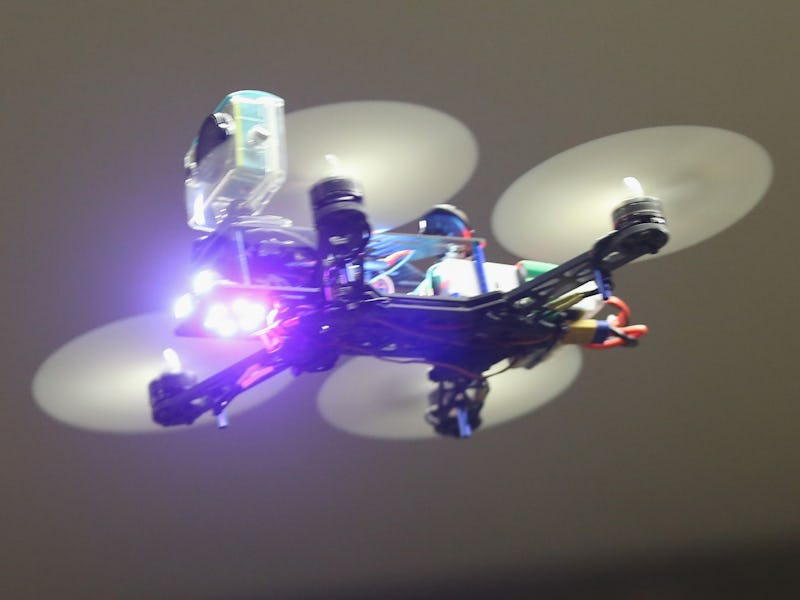Lack of Quadcopter Restrictions Could Start Fun Civilian UAV Arms Race
Yes, Tokyo police have got those nets and the White House is looking for new tech, but razor rotors are still legal.

The technology behind the counter-drone drone is taking off in earnest, as Japanese police demonstrated in early December. The system tested in Tokyo fairly simple — a large drone swoops over a smaller rotocraft, snagging its prey in a rectangular net. It’s like a cartoon vision of an oceanic food chain, acted out by sky robots.
Though there isn’t yet one anti-quadcopter technology to rule them all — a White House-backed $100,000 grand prize is up for the tinkerer who devises a way to stop a drone gently — nets seem to be an early frontrunner. Unlike a pellet or missile, nets are less likely to cause collateral damage, making them attractive options for authorities in Tokyo, Paris, and other urban locales.
There are ways to get around a net, however — and down that path lies drone modification.
As it stands now, building your own drone requires taking into account surprisingly few restrictions. Most U.S. civilian regulations have focused on where you can fly, not what you can fly: It has to stay within line of sight, weigh less than 55 pounds, and maintain flight below 400 feet off the ground. And, thanks to a new FAA rule, you’ll have to register it before your first flight. But if you want to upgrade your props to, say, net-shredding blades? Or, to take the the firepower a bit further, strap a gun to your drone?
If you fly your gun-drone on private property, as Connecticut authorities found out in July, there’s no violation — except of common sense. Really.
That’s not to say that all drone DIY-ers are about to strap weaponry to their hobby — and, away from private property, reckless endangerment becomes a thing — but you could make the argument that if fighter kites with razor-sharp strings are legal (though outlawed in parts of Brazil), what’s to stop razor drones? Nets could still take down most modded drones, but things get interesting at max payload. Things also get interesting when people start using autonomous drone steering to program evasive maneuvers. Fun!
Taken to the extreme, this becomes an arms race of drone countering and counter-countering. Is there a way to nip this in the bud — will we see regulation that dictates the design of what you’re allowed to fly? To look at America’s favorite vehicle — the car — is to see limits. Even if you can buy spikes for your car bumper from Wal-Mart — and, apparently, no one will immediately pull you over if your semi has Mad Max-style chariot hubcaps) — there are laws that mandate that, yes, you need a catalytic converter and the degree of tint on your windows.
So we won’t be surprised if states begin to sketch out what acceptable quadcopter design looks like, particularly when it comes to evading nets or whatever fills the anti-drone role. Eventually, anyway — if the march of progress is inevitable, so is the legislative branch’s lag-time.